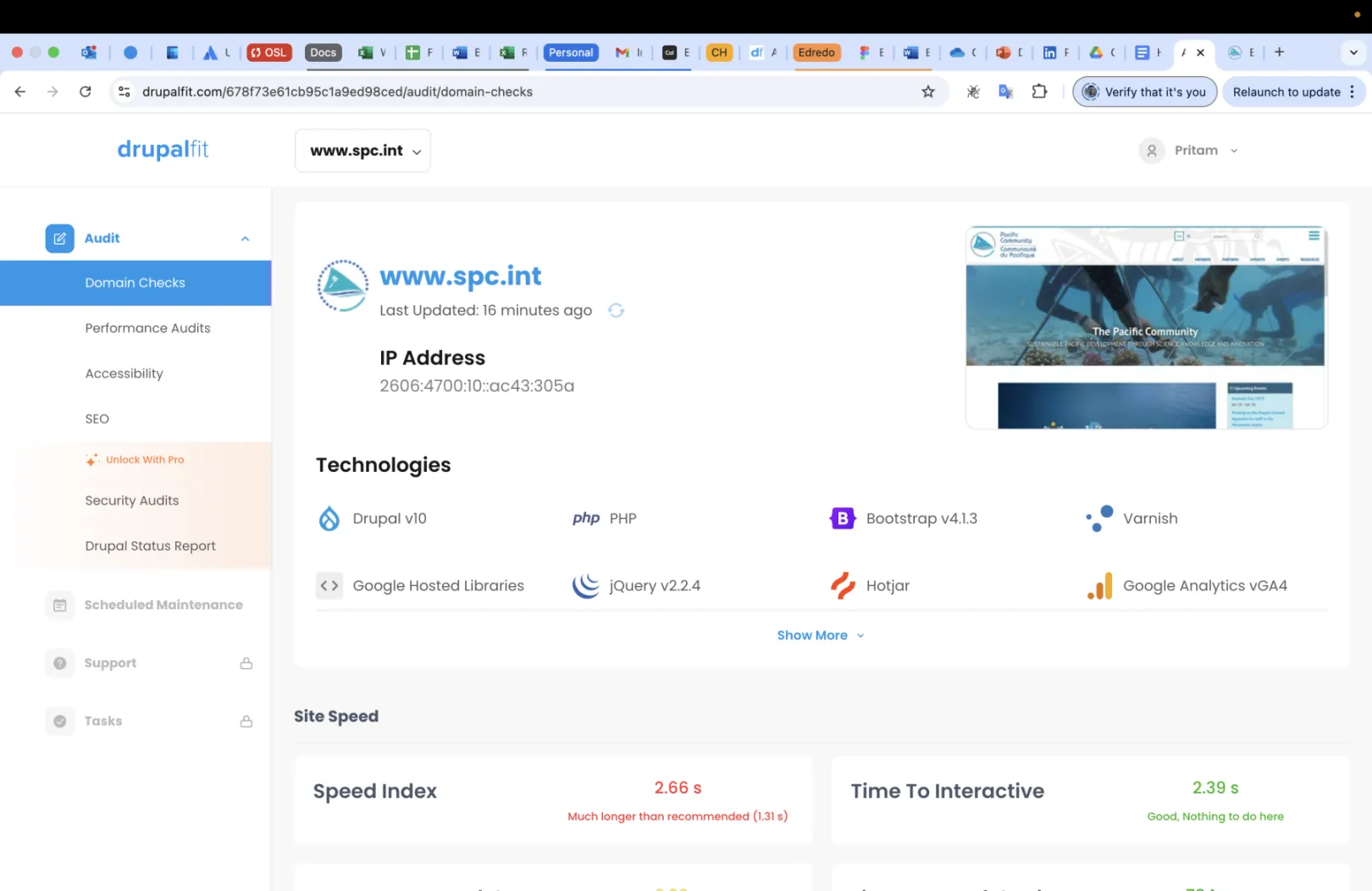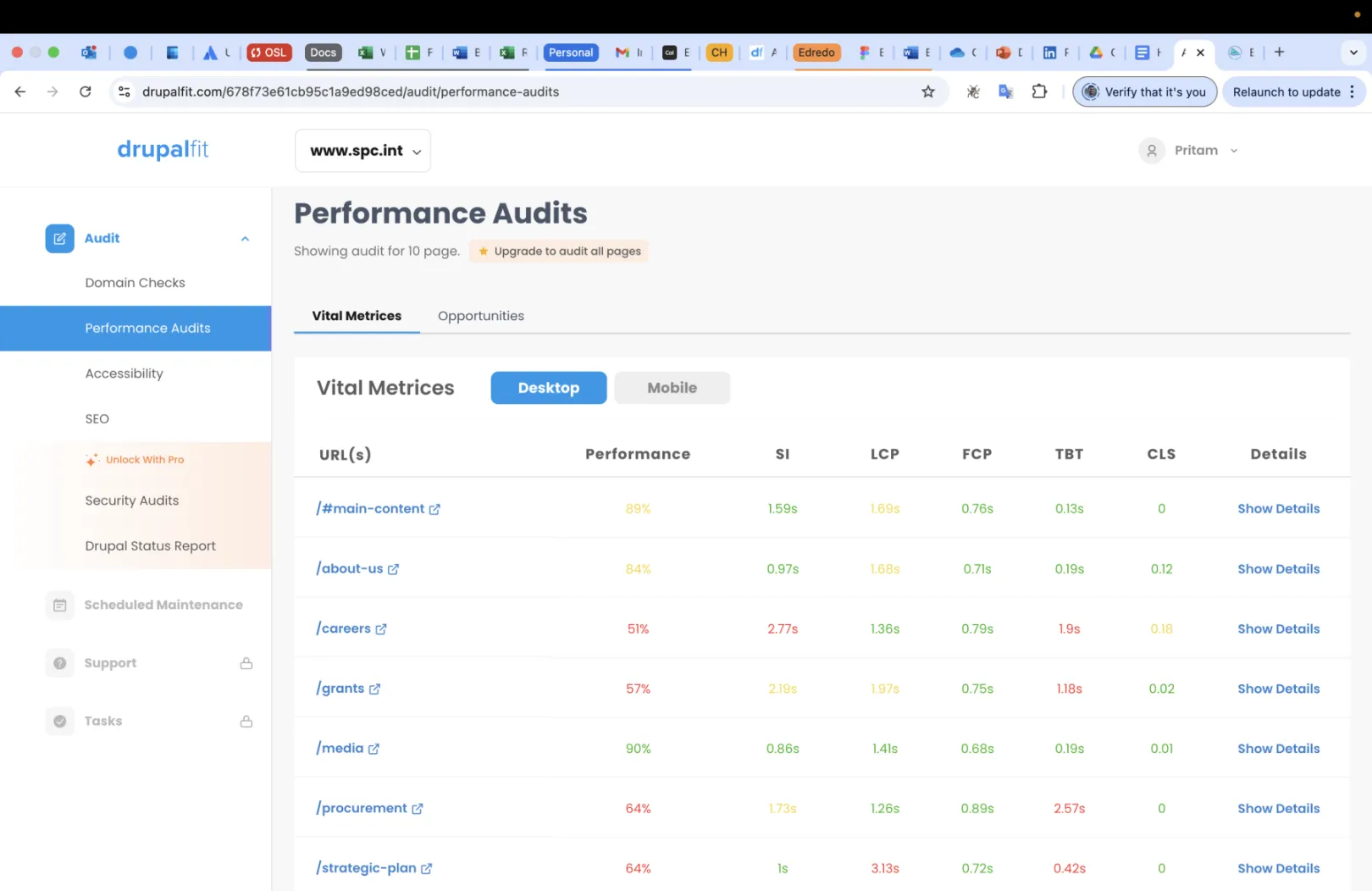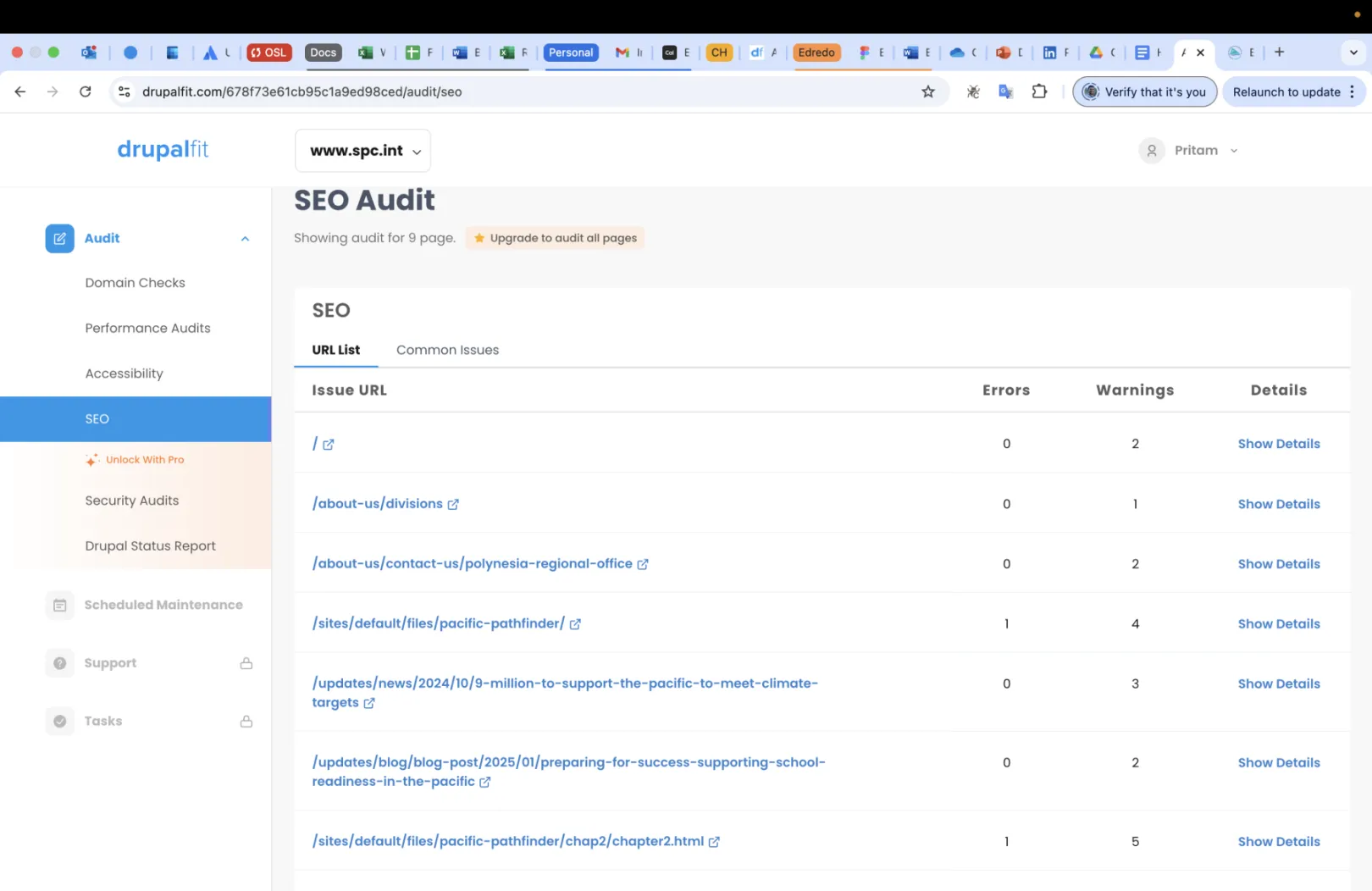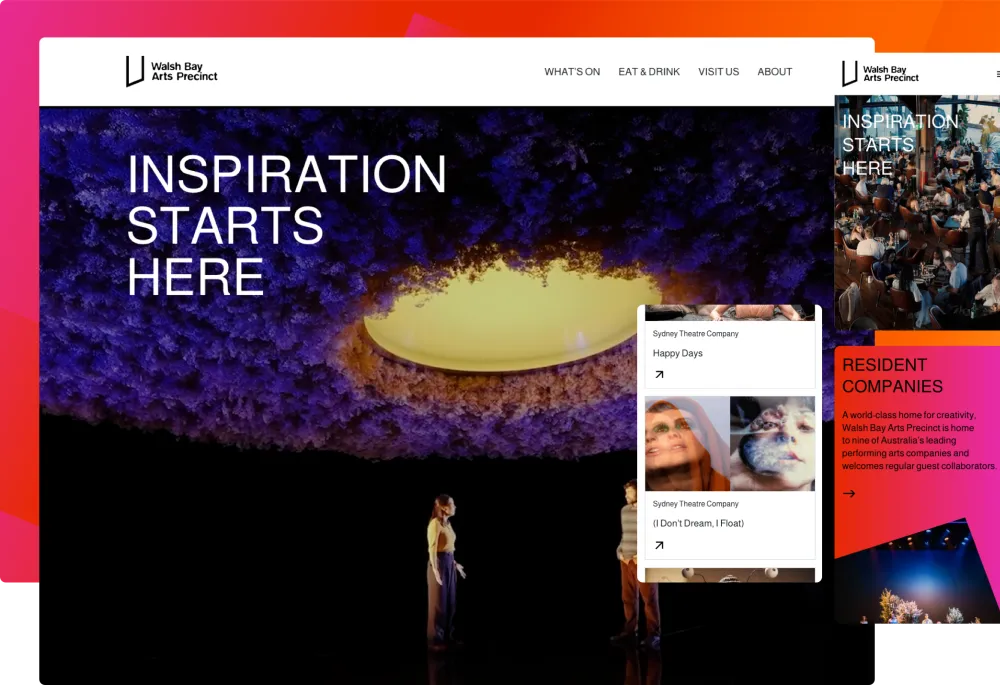Sector(s)
- Agriculture
- Arts
- Banking and Financial
- Beauty and Fashion
- Blogging
- Community
- E-Commerce
- Education
- Enterprise
- Entertainment
- Government
- Healthcare
- Legal Industry
- Localization
- Manufacturing and Energy
- Media
- Music
- Non-profit
- Publishing
- Real Estate
- Religious organizations
- Retail and Distribution
- Small business
- Social Networking
- Sports
- Startups
- Technology
- Telecommunications
- Travel and Hospitality
- Urban planning
Team Members
Project Team
Rohit Singh
Visit the site
Visit the siteOrganizations Involved
Community contributions
The DrupalFit API Module: A custom module that allows Drupal websites to integrate with DrupalFit, fetching real-time site health reports and incorporating Drupal status reports into DrupalFit’s audit system.
DrupalFit is a next-generation platform that empowers organizations and individuals to assess and improve their Drupal-based websites through audits, SEO analysis, accessibility checks, and membership-driven insights. Built as a decoupled system, DrupalFit leverages Drupal as its robust backend, with Next.js powering the frontend, and a suite of microservices (Node.js, AWS Lambda, and third-party APIs) handling complex tasks like SEO and accessibility audits.
By utilizing Drupal’s powerful content management capabilities, DrupalFit ensures seamless membership management, SaaS pricing control, blogs, and account/workspace management while delegating intensive computations to scalable microservices.
The primary goal of DrupalFit was to build a scalable and efficient SaaS platform that could provide seamless website audits, membership management, and workspace functionalities while ensuring optimal performance. Given our extensive experience with Drupal, we designed the system to leverage Drupal’s strengths where it excels, while offloading resource-intensive processes like SEO audits and accessibility checks to microservices. The platform needed to support a decoupled architecture, with a Next.js frontend for enhanced user experience and a Drupal backend managing user accounts, pricing plans, blogs, and content-related operations.
One of the key aspect was ensuring that audit storage and processing did not burden the Drupal backend, which led to the decision to integrate microservices using Node.js and AWS Lambda for efficient, scalable performance. At the same time, Drupal was required to seamlessly manage memberships, subscriptions, role-based access, and content workflows, ensuring a smooth experience for users. The project also needed to ensure that all components interacted securely and efficiently, with OAuth and JWT authentication facilitating communication between services.
The outcome was a highly optimized SaaS platform that combined Drupal’s robust content and membership management with the flexibility of microservices for complex computations. The Next.js-powered frontend delivered a modern and interactive user experience, while the headless Drupal backend ensured smooth operations for account handling, subscription management, and content structuring. Additionally, we contributed back to the Drupal community by developing a custom connector module that allows Drupal websites to integrate with DrupalFit, fetching real-time audit reports and incorporating Drupal status reports directly into the platform’s analysis. The success of DrupalFit demonstrates how a well-architected, decoupled Drupal implementation can power a scalable, efficient, and feature-rich SaaS product.
At OpenSense Labs, we have built and delivered hundreds of Drupal projects, giving us a deep understanding of what Drupal excels at and where it is the best fit. When designing DrupalFit, we carefully evaluated which parts of the system should be powered by Drupal and which should be offloaded to microservices.
For example, audit services, which involve resource-intensive processes like SEO and accessibility checks were not suited to run within Drupal. Instead, they were decoupled into separate microservices using Node.js and AWS Lambda. However, Drupal’s built-in strengths in membership management, content management (blogs), workspace management, and pricing models made it the perfect backbone for structuring DrupalFit as a SaaS product.
Beyond this architectural decision, Drupal stood out as the best choice due to several key factors:
- Flexibility & Customization: Drupal provides a highly extensible and modular structure, allowing us to tailor features like role-based access, subscriptions, and pricing models to meet SaaS requirements.
- API-First Architecture: Drupal’s JSON:API and GraphQL support made it an ideal choice for building a headless CMS, allowing seamless integration with our Next.js frontend and external microservices.
- Security & Performance: Drupal’s robust security framework, granular access control, and built-in caching strategies (e.g., BigPipe, CDN integration) ensure that DrupalFit is secure, fast, and scalable—critical for any SaaS application.
- Community & Long-Term Support: Drupal is a mature, community-driven platform with long-term security updates and an active developer ecosystem, ensuring sustainability and continuous improvement.

Technical Specifications
Drupal version:








